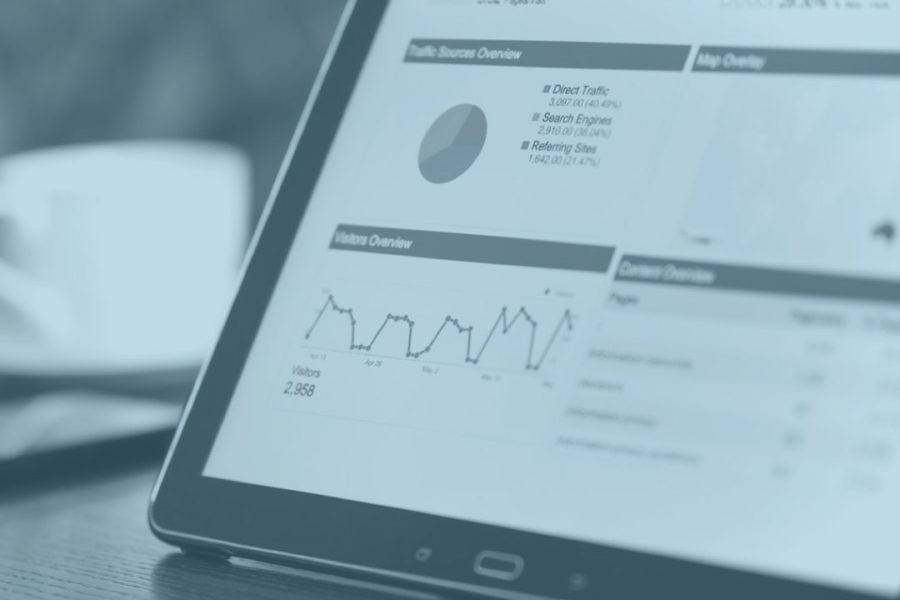Surprise! “Inbound Marketing Company Writes About Inbound Being Better Than Outbound.”
We know. Very original.
But here’s the thing: A lot of companies are avoiding the inevitable need to stand up an inbound channel. Everyone knows a solid content strategy, a clearly defined audience, and a blog full of great posts is a good thing, but not necessarily why or how to get there.
There are boatloads of reasons why companies drag their heels with inbound. This post is not for the companies who are just too cash and time-strapped to employ an inbound strategy (although, feel free to keep reading if you’re thirsty for knowledge).
Who this post is really for are the companies that have a legacy view of their clients and partners. It’s for the companies and their leaders who say:
“We’ve sold the same way for 20 years, why change now?”
“Nothing could possibly slow down the rev on our radio ads!”
“Banner ads are digital goldmines!”
“We don’t need to show up in Google searches; our commercial is on local TV!”
Lucky for us (and for you), Wayne Gretzky already explained everything when he said,
”Skate to where the puck is going to be, not to where it has been.
The Great One
Buying habits are changing. What your clients look for and how they look are not the same as they were 10 years ago.
Millennials are growing up, starting businesses and making babies. The babies are born with iPhone X’s in their hands, and they ask Siri, “Where’s the best place to get milk?” before the umbilical cord is even cut.
You know where the puck has been. You are the master of that domain. Inbound marketing will help you skate to where the puck is going to be. It will help you to prepare for an inevitably digital future.
Here are four comparisons that illuminate the fundamental ways that inbound differs from outbound:
1. MARKETING PLATFORMS
Inbound Marketing Channels vs. Outbound Marketing Channels
One basic intention of inbound marketing is to strengthen your presence on Google and social media. Outbound marketing, on the other hand, strengthens your presence on TV, radio, trade-shows and the telephone(!).
Which platforms do you think are more valuable in 2018 and beyond?
The swift-thumbed crop of Millennials is not called the “cord-cutting generation” for no reason. Over 22 million U.S. grownups cut their cable by the end of 2017. That was a 33% jump from the cord cutters of 2016.
Google, the market leader with over 60% of all search requests, now processes over 40,000 queries per second! Your audience is online. Obviously, you need to meet them there. The question is “how?”
You can either harness inbound marketing to organically rank, or you can purchase pay-per-click ads. Both strategies will increase your visibility in Google searches. As investments, they differ significantly concerning their lifetime value and their ROI.
2. MARKETING ROI
Inbound Marketing CAC vs. Outbound Marketing CAC
What is the customer lifetime value of your desired clients? How much money are you willing to spend to get them?
Your Customer Acquisition Cost (CAC) can be broken down by dividing the marketing dollars spent by the quantity of customers acquired. You already know this. It’s more interesting to look at a breakdown of CAC for each marketing channel.
Let’s ignore $5 million super bowl ads, billboards in Times Square, first-class flights to Vegas and client dinners at Nobu. Let’s focus on Inbound Marketing vs. PPC (Google AdWords, Facebook…).
Inbound Marketing monster, Hubspot, performed a study in 2012 claiming that inbound leads cost 61% less than outbound leads. The trends have evolved since then. Pay-Per-Click ads have become more ubiquitous and more profitable (especially in e-commerce).
But, in the B2B world, inbound is still king. The purchasing style of a B2B client tends to lend itself to expertise and relationships as opposed to capturing an impulse. It’s harder to prove expertise and thought leadership in a PPC style campaign.
If the customer lifetime value of your desired audience is meaningful that means the decision to engage your service is going to be well researched. Your prospective clients are going to harvest knowledge from Google.
It would be best if you created some of the content that they’ll inevitably peruse. It is a small price to pay in exchange for a few big clients. The customer acquisition math is downright breathtaking.
Not entirely sure how to calculate your customer acquisition costs?
No worries!
3. MARKETING PERSONALITY
Natural Marketing Vs. Interruptive Marketing
We have been conditioned by television and radio commercials to endure interruptive marketing. It’s just a fact of life.
Recently, we’ve found ways to fight back: We cut the cords on our TV’s to avoid the commercials or TiVo everything to fast forward through whatever we don’t like. We speed through the promo spots at the beginning of our podcasts. We “x” out the banners that get dropped on our favorite websites. Even some of the biggest companies out there (cough…Apple) are playing with the idea of blocking all ads (this could mean a cold war between Google and Apple).

Blocking ads like the Karate Kid
How many products or services have you purchased recently without spending a little time searching on the internet? The answer is probably close to 0. Today’s buyers are researchers.
Permissive marketing is the process of providing valuable content online that will lure your customers to you. In this way, inbound marketing is providing the nutrients that prospective buyers crave. The inbound content pulls customers into your world, rather than pushing them in against their will.
The best part is that your prospects made the first move. They asked the first question. Your content is definitely a ‘carrot on a stick,’ but to your prospects, it’s the ‘benevolent answer to their question.’ The first impression that you make is honey soaked in helpfulness. Rather than the interruptive bee sting of an outbound ad.
Inbound
- Permissive
- Pull Tactics
- Two-Way Communication
- Marketers Provide Value
- Customers Come To You
- Channels: Search Engines, Referrals, Social Medias
Outbound
- Interpretive
- Push Tactics
- One-Way Communication
- Marketers Provide Little-To-No Value
- Customers Are Hunted
- Channels: Print Ads, TV Ads, Radio, Telemarketing…
Inbound marketing falls seamlessly in-step with a person’s normal process: They are searching for an answer, they ask Google, they find your article, and they either do something (like contact you to ask a question) or don’t, but you didn’t break their productivity. Outbound marketing is intentionally created to stop your momentum and push you in a new direction. It interrupts your productivity and you may or may not be on guard after.
You will notice distinct differences in inbound leads vs outbound leads by talking to your sales team. Your sales team will tell you that inbound leads tend to know what they’re looking for. They have done research and decided your company offers a viable solution.
The question is not necessarily ‘which sales process makes the most sense for your clients?’ I think we both know that people prefer not to be bothered. The question is how to execute and measure the effectiveness of both strategies.
4. FUTURE OF MARKETING
Inbound Future vs. Outbound Future
There is a well worn (and deeply satisfying) analogy in this industry:
Paid advertising is like renting and organic is like owning.
The strength and power of paid advertisements is their speed. If you spend enough money, you can buy an ad that will place you at the top of a Google search. Which is important. The ads burn bright and fast, and then they disappear forever. If you get an excellent ROI, great. If not, that cash is gone forever.
The true beauty of inbound marketing assets is that they appreciate over time. They are an investment in the most valuable real estate of the future: Search Engine Soil.
Your first blog post is not going to go viral. It will not hockey-stick your website traffic or your revenue. But, over time, that first blog post will gain value. Over time Google will reward you for your consistency and your trustworthiness. You will organically move up Google search rankings and plant your flag directly in front of your targets.
Other Amazing Uniquely Inbound Benefits
- Inbound Recruiting: If you write attractive content people will want to work for you. If you write content that accurately reflects your company the right people will want to work for you. One of our client companies grew to 50+ people without using recruiters because they had so many submissions to their careers page just on their website, most of those people started as blog post readers.
- Inbound Foundation: The content that you create now is the seed of future content. White papers, ebooks, infographics, videos will all grow from your early efforts.
- Living, Breathing Inbound: Your company might pivot or a sever a partnership. No worries. All your content is living content that can be fine-tuned, honed, adjusted, deleted, shared, etc. When you evolve, your inbound assets can evolve with you.
If you found any of this nutritional ‘inbound vs. outbound’ information to be particularly perplexing or particularly interesting please do not hesitate to reach out. We are shameless marketing nerds and we like to help companies solve marketing problems. (We can also probably recommend a good pizza place or explain why your car is making funny noises.)




